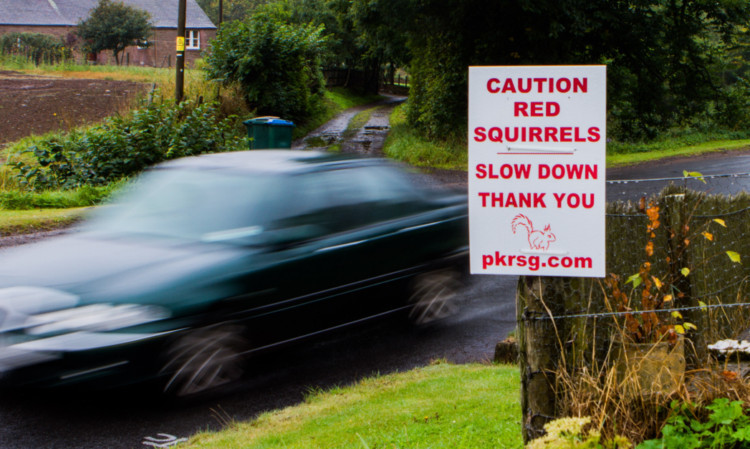Tufty may be an iconic advocate of road safety but his siblings’ lack of street smarts are hitting conservation efforts in Perth and Kinross.
Residents of the tiny village of Collace have become concerned by the number of red squirrels found dead by the roadside.
Significant efforts are being made to protect the population across the region and, locally, there have been signs of a slow increase in numbers.
Lately, however, a number have been found dead, with residents believing that speeding traffic is the reason.
The issue was raised at a meeting of Burrelton and District Community Council and was taken on by local councillor Lewis Simpson.
Signs have now been erected in the village in a bid to make motorists aware of the popular small animals.
In Blairgowrie, meanwhile, residents are asking for consideration to be given to measures to help red squirrels cross the road in safety.
“There is a real problem on the approach to Blairgowrie at Rosemount,” Blairgowrie 50+ Art group member Diana Thomson said.
“The number of dead squirrels you see on this road is absolutely horrible.
“People on either side of the road feed them and they then cross the road without a care in the world, only to be hit by passing traffic.
“I was driving past the other day when I saw one crossing in front of a car. I initially thought it had gone between the car’s wheels, but when I stopped it was clear that it had been hit. I rushed it to the SSPCA but they said there was nothing that could be done.
“There are big trees down either side of the road at Rosemount and I wonder why a rope bridge or some other measure might not be introduced to enable these animals to cross safely.
“I’ve read that red squirrel numbers are up around 7% across the UK. Hopefully this means that they are winning the battle elsewhere, but they are certainly not winning in Rosemount.”
Members of the Perth and Kinross Red squirrel Group this year claimed that the population was in danger of dying out unless action was action.
Scotland is home to 75% of the UKs red squirrel population but a combination of road deaths and squirrel pox has made increasing numbers a tricky proposition.
The non-native grey species is not susceptible to the illness but is a carrier and can pass it on to reds, who will die if they catch it.
The group has been working with landowners and householders for some time to protect the red population across the region, whether through conservation or warning signs.
